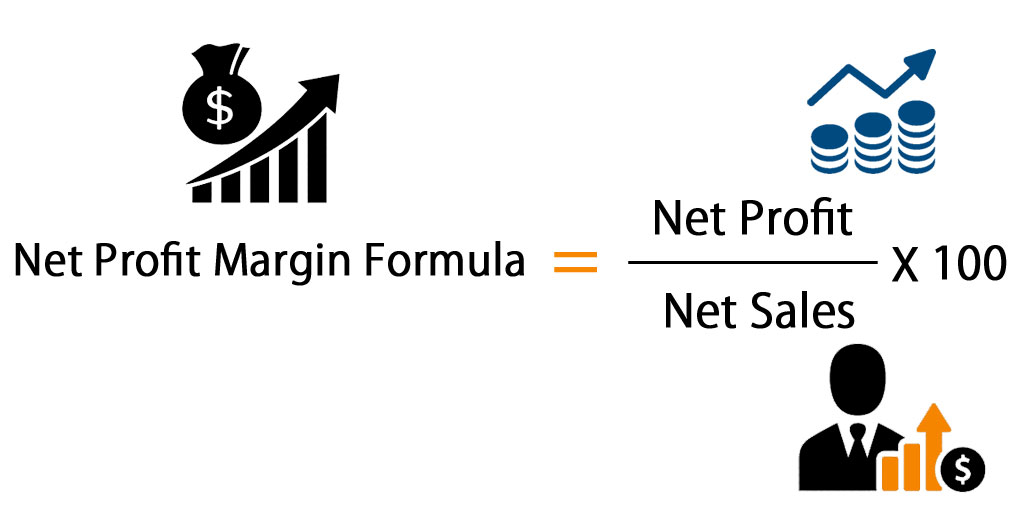What is a Good Net Profit Margin for a Business?
We often know that our net profit margin expresses what percentage of your sales is actual profit as revenue or net sales, which is also known as profitability ratio in our business operations. So, sounds important, isn’t it? This number accounts for all expenses a business faces, not just the cost of goods sold. This article will give you instructions on how to calculate it, how analysts can assess an excellent net profit margin, and some common questions you might have for it. Let’s dive in!
What is net profit margin?
Basically, net profit margin, which people also called as net margin, shows how much net income a company makes with the total sales reached.
When your company has a high net profit margin, it means that your performance in converting sales into actual profit is really productive. Net profit margin is different from gross profit margin because the profit margin calculation doesn’t include fixed costs. Meanwhile, the net profit margin ratio consists of all costs to define the final benefit for a business’s income. It is a ratio formula that compares a business’ profits to its total expenses. To calculate net profit margin, you must have skills different from those of a small business owner to an experienced CFO, based on the company’s size and complexity.

To understand the meaning of net profit margin, you must know the factors of it in all business activities, which are:
- All expenses cash flow
- Overall revenue
- COGS, which is the Cost Of Goods being sold and other operational expenses
- Added income streams
- Debt payments with interest paid
- Previous payments for occasional events such as lawsuits and taxes
- Investment income and those from secondary operations
So, the net profit margin is one of the most crucial indicators of a company’s financial health. When you track the increasing and decreasing parts in your company’s net profit margin, your company would be able to assess how your current practices are working and predict the profits based on revenues. Due to the fact that your companies express net profit margin as a percentage more than a dollar amount, so it is feasible to weigh up the profitability of the two or more businesses in any case of size.
For investors, the net profit margin can help assess whether a company’s management is well-generated enough in terms of profit from its sales, whether operation costs and high-up costs are being included. For instance, a company can have increasing revenue; however, if its operating costs are growing faster than revenue, then the net profit margin will diminish. In an ideal way, investors will expect to see a track that record the expanding margins meaning that is increasing in net profit margin over time. Companies that can extend their net margins over time are normally rewarded with share price growth, which is typically correlated with high earnings growth.
How does net profit margin work?
Before you can evaluate the net profit margin, you’ll have to understand that it includes net profit and net sales. The net profit is defined by eliminating all of your expenses from your revenues, including wages, salaries, utilities, and many fees. You can evaluate net sales by subtracting your returns, allowances, and discounts from your overall revenue.
Explaining Your Net Profit Margin
The net profit margin works to show how well your business converts its sales into profits. In other words, the percentage was estimated by the net profit margin equation, which is the percentage of your revenues that are the revenues your company gets to keep. On the contrary, this ratio also shows the amount of revenue you are about to skip through fees and costs that go along with your business. It can help find out whether a business should concentrate on whittling back spending. You can see that both the net sales and net income are referred to each other, in that expenses can expand the prices and reduce the sales (based on your goods and audience). Figuring out the exact relationship is not always an easy thing.
How to calculate net profit margin?

Your net profit margin displays the percentage of your sales is actual profit. This is after factoring in your cost of goods sold, operating costs, and taxes. To calculate your net profit margin, you just need to split your net income by your total sales revenue.
The formula: Net income ÷ total sales = net profit margin
The result you have is your net profit margin; just multiply this number by 100 to get a percentage.
Examples of net profit margin
Let’s say you’re in an ABC company with an extraordinary gain from one side business; a soft drink manufacturer’s core business is manufacturing and selling beverages. In 2020, ABC company generated $1,000,000 in annual revenue. Your net income was $350,000. Your cost of goods is $400,000. To calculate your profit margin, you have to calculate your net income and net sales first and then utilize the profit margin formula once you have identified your net income and net sales.
In this case, your ABC company’s Profit Margin = ($350,000/$1,000,000) x 100 = 35%
Then, you have to find the Gross Profit Margin by knowing the revenue and COGS first:
ABC company’s Gross Profit Margin = ($1,000,000 – $400,000) / $1,000,000 x 100 = 60%
In summary, ABC company’s profit margin is 35%, and its gross profit margin is 60%.
What is a good net profit margin?
To assess whether a business has a good net profit margin, you should start from your industry and expansion goals and a host of other factors, such as the economy. Sometimes, it is much like comparing apples to oranges. Some industries with hardly any overhead costs, for example, consulting, for example, will have a higher level of net profit margin than a restaurant. This proves a fact that it is not easy to compare every small business against this average as all businesses have a different way of operating. Below are some factors to base on to assess a good net profit margin:
-
Specifics of Industry: There is a study from NYU study about net profit margin data in various industries, then the result shows a greatly different result: the net margin of advertising is 6.04 percent, meanwhile the alcohol industry’s net margin is 19.13 percent. At the same time, the computer services’ profit margin has about 6.02 percent, and farming and agriculture cover approximately 3.18 percent. In the CBS News reported in 2016, some of the following industries that have high net profit margins: Accounting, Tax Preparation has around 18.3 percent, Lessors of Real Estate has 17.4 percent, Outpatient Care Centers has 15.9 percent and Offices of Real Estate Agents/Brokers has about 14.8 percent. So, the key point here is that you need to ensure that you do the research on your industry, especially in your geographic area to hold the idea of the net profit margin that you expect to have. A financial advisor is recommended to speak with you to get useful advice on your business.
-
Expansion goals: Think about the case that you calculate your business revenue against your expenses, then you will find that you have a comfortable profit margin and you don’t want to expand it. In case you are planning more, then your net margins might need to be higher than the medium level to meet your expansion goals, whether that means you have to get new equipment or enhance a line of credit.
-
Size and longevity: For a brand-new business that has higher profit margins due to the lower overhead costs such as payroll. As you expand the size, then the number is more likely to dwindle the percentage-wise, but it doesn’t mean that you are making less money.
Common questions about net profit margin

As you may know, every matter has some other common question being ask while people going into it; here are 4 questions that we often get:
- Is Net Profit Margin a Percentage?
In terms of frequency, yes it is. As net profit margin is a ratio, so it may be known as either a decimal or a percentage. You just need to multiply the decimal by 100 to change it into a percent.
- What Is Considered a Good Net Profit Margin?
A good net profit margin that is over 10 percent is usually considered a good one, but that number can change due to your business’s industry.
- Can Net Profit Margin Be Over 100?
Because things that are produced have some associated cost, like time, raw materials for example, then the net profit margin is hardly over 100. A few companies may have a net profit margin over 100, which are non-operating gains.
- Are Net Profit and Liquidity Related?
As you might know, liquidity refers to the rate at which companies are able to turn assets into cash. then the net profit margin is more likely to be included in its profitability after taking operating expenses into consideration. Even though a company that has a good net profit margin for its industry but still has poor liquidity, so it is still difficult to sell stuff quickly
Final Thoughts
To sum up, the net profit margin enables analysts to measure how productively a company is operating. The higher your net profit margin is the more money your company keeps. When you compare this net profit to net sales, or revenue in some cases, you will get yourself the most precise results possible. So, I hope this article has helped you solve your problems with a net profit margin. If you have any other troubles, please leave a comment below and we will reply to you soon. Good luck with your business!
New Posts






